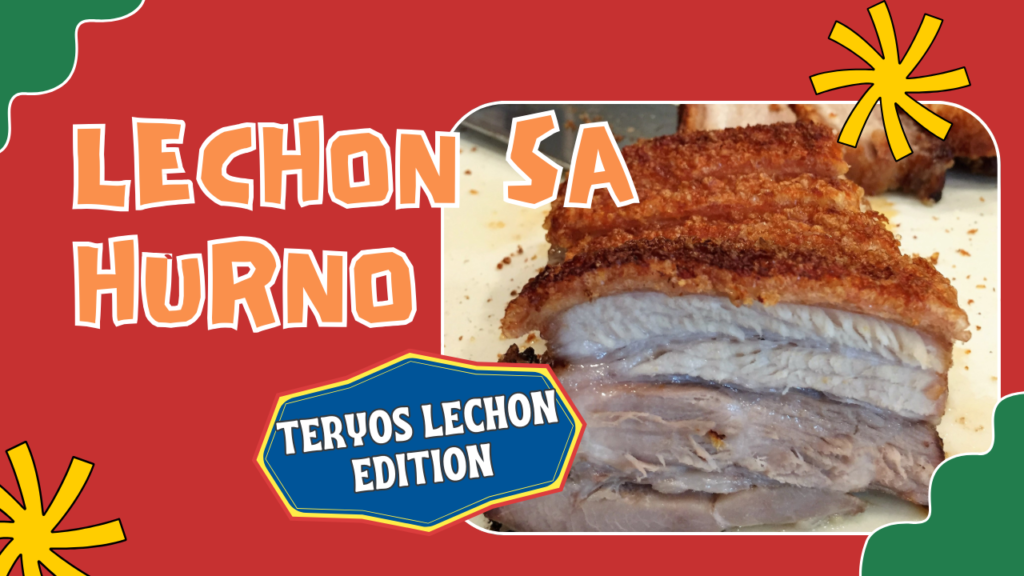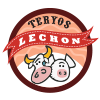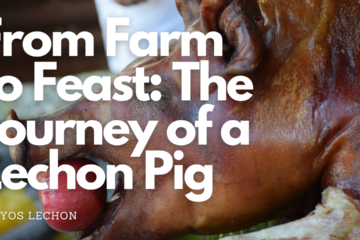Lechon, the beloved Filipino roasted pork, is a must-have at any celebration or family gathering. Yet, the traditional way of cooking lechon can be both time-consuming and quite challenging. That’s where lechon sa hurno comes in—a simpler version that still offers the same deliciously crispy skin and juicy meat, but without all the fuss. In this article, we’ll explore how you can master this mouthwatering dish right in your own kitchen.

What is Lechon sa Hurno?
Lechon sa hurno, which translates to “roasted pork in the oven,” is a convenient and accessible way to recreate the classic lechon experience. Unlike the traditional method, which involves cooking the whole pig over hot coals, lechon sa hurno utilizes the oven to achieve the desired crispiness and tenderness.
Nutritional Breakdown
Lechon sa hurno is high in calories, fat, and protein, given that it is made from pork belly which is one of the fattier cuts of pork. The exact nutritional values can vary slightly depending on the ingredients and cooking methods used, but generally one serving (around 3-4 oz or 85-113g) contains:
- Calories: 400-550 calories
- Total Fat: 35-50 grams
- Saturated Fat: 12-18 grams
- Protein: 15-25 grams
- Carbohydrates: 0-1 gram
- Sodium: 600-1000 mg
High in Fats and Protein
The majority of the calories and weight in lechon sa hurno comes from its high fat content, especially saturated fats from the pork belly and oils used. However, it is also a good source of protein thanks to the meat itself.
Low in Carbs
As it’s made almost entirely from pork with just some seasonings, lechon sa hurno contains virtually no carbohydrates, making it a keto and low-carb friendly dish.
High in Sodium
The salt rub and marinade leads to a very high sodium content, often providing over 40% of the recommended daily intake of sodium per serving.
So while delicious, lechon sa hurno is very calorie-dense and high in saturated fats and sodium. It should be consumed in moderation as part of an overall balanced diet. Serving with low-calorie sides like vegetables can help balance out the meal.
Ingredients
- 1 kilo Pork Bely Slab
- 8 cloves Garlic, chopped
- 1 bulb Onion, chopped
- 2 pieces Thumb – sized Ginger, thinly sliced
- 1 stalk Lemongrass, lightly crushed
- 1/4 cup Salt
- 1/4 teaspoon Ground Black Pepper
- 2 – 3 cups Water
- Oil for Basting
- Salt
Preparing the Pork Belly
Choosing the Right Cut
The key to a successful lechon sa hurno lies in selecting the right cut of pork belly. Look for a slab with a generous layer of skin and fat, as this will contribute to the crunchiness and flavor. Many grocery stores, like Puregold, offer a wide variety of pork belly cuts, including the lechon kawali cut, which includes ribs attached to the meat.
Seasoning and Marinating
Before cooking, ensure that the pork belly is thoroughly seasoned and marinated. A combination of salt, garlic, onions, ginger, lemongrass, and black pepper is a classic Filipino seasoning blend that infuses the meat with robust flavors. Marinating the pork belly overnight allows the seasonings to penetrate deeply, enhancing the overall taste.
Cooking the Lechon sa Hurno
- Preheat your oven to 250°C (482°F).
- Thoroughly clean the pork belly slab.
- In a pot, combine garlic, onion, ginger, lemongrass, salt, ground black pepper, water, and the pork belly slab.
- Boil and simmer until the pork belly is tender.
- Pat the pork belly slab dry.
- Score the skin of the pork belly.
- Baste the pork belly with some oil and sprinkle with salt.
- Bake in the preheated oven for 30 to 40 minutes, or until the skin is crispy.
- Serve with pinakurat vinegar or liver sauce.
Expert Tips and Tricks
Oven Temperature and Time
Oven temperature and cooking time are crucial factors in achieving the perfect lechon sa hurno. While the traditional recipe calls for a lower oven temperature, modern ovens may require adjustments. Start with a higher temperature, around 250°C (482°F), and monitor the cooking process closely. The goal is to achieve a crispy skin while ensuring the meat remains juicy and tender.
Basting and Scoring
Basting the skin with oil and scoring it are essential steps for achieving that irresistible crunchiness. Regularly basting the skin with oil during the baking process helps it crisp up evenly. Scoring the skin allows the fat to render and the skin to puff up, creating that iconic crackling texture.
Resting and Serving
Once the lechon sa hurno is cooked to perfection, let it rest for a few minutes before slicing. This resting period allows the juices to redistribute throughout the meat, ensuring maximum tenderness and moisture. Serve the crispy lechon sa hurno hot, accompanied by your favorite dipping sauces, such as liver sauce or spicy vinegar.
With this comprehensive guide, you’re now equipped to create a mouthwatering lechon sa hurno in the comfort of your own kitchen. Embrace the flavors of Filipino cuisine and impress your friends and family with this delicious and crispy roasted pork dish. Remember to follow the tips and techniques outlined in this article, and you’ll be well on your way to lechon sa hurno perfection.




0 Comments